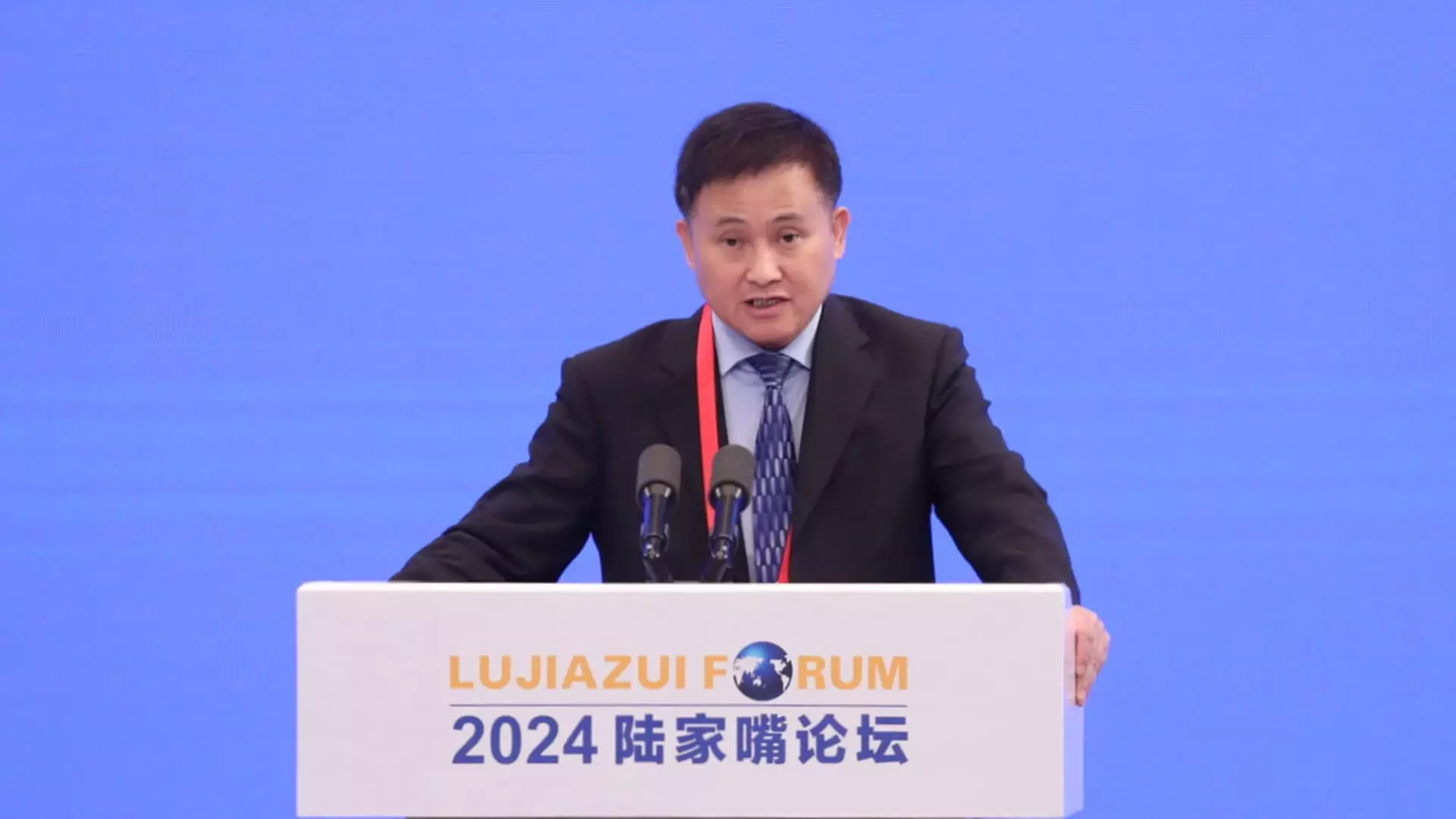In a significant move aimed at bolstering its struggling economy, China’s central bank, the People’s Bank of China (PBOC), has announced a critical adjustment to its cash reserve requirements. The decision, communicated by Governor Pan Gongsheng in a press conference, includes a 50 basis point reduction in the reserve requirement ratio (RRR). This proactive approach marks a departure from traditional methods of communication within the financial sector, highlighting an urgent response to the nation’s current economic challenges.
The reserve requirement ratio dictates how much capital banks must hold in reserve, effectively influencing their capacity to lend money. By reducing this requirement, the PBOC aims to provide banks with greater liquidity, thereby facilitating increased lending to businesses and consumers. This shift is crucial, considering the prevailing economic climate characterized by sluggish growth and sagging consumer confidence. Governor Pan indicated that further reductions, potentially ranging from 0.25 to 0.5 percentage points, could be anticipated by the year’s end, signaling a robust commitment to economic stimulation.
The PBOC’s decision isn’t limited to the reserve requirements; it extends to interest rates as well. A notable reduction of 0.2 percentage points in the 7-day repo rate was also announced, which serves as a vital tool for managing short-term liquidity within the banking system. Following the governor’s remarks, China’s 10-year government bond yield plummeted to an unprecedented low of 2%, reflecting investor sentiment surrounding the revised economic policies and the anticipated easing of monetary constraints.
Moreover, the mention of a possible cut in the loan prime rate (LPR) adds another layer of complexity to this strategy. Although Pan refrained from providing specific details regarding the timeline and applicability between the one-year or five-year LPR, the indication of potential adjustments illustrates a readiness to further incentivize borrowing and investment.
This policy announcement is particularly noteworthy as it comes on the heels of the U.S. Federal Reserve’s own rate cuts, suggesting a broader easing cycle across global financial markets. The PBOC, having maintained a cautious stance for several months, appears to now possess increased latitude to implement necessary rate cuts to stimulate domestic demand. This interplay between international monetary policies highlights the intertwined nature of global economies, particularly in a landscape riddled with deflationary pressures.
Moreover, it’s crucial to recognize that unlike the Federal Reserve, which primarily focuses on a singular interest rate, the PBOC manages its monetary policy through a more intricate framework of various rates. This nuanced approach allows for greater flexibility in addressing specific economic challenges as they arise.
Interestingly, the structure of governance in China’s financial system implies that strategic agendas are often dictated at much higher levels than the regulatory confab attended by Pan and his counterparts. Decisions made during high-level discussions earlier this year emphasized the need for meeting full-year growth targets and fostering domestic demand. Such initiatives underscore a strategic pivot towards revitalizing a faltering economy through targeted fiscal and monetary policies.
Despite the PBOC’s determination to maintain a competitive edge through rate cuts, economic watchers have been vocal about the necessity for comprehensive stimulus measures, particularly on the fiscal front. With China’s growth trajectory facing headwinds from a beleaguered real estate sector, coupled with shrinking consumer sentiment, the PBOC’s actions may be seen as just one piece of the puzzle needed to reignite robust economic expansion.
The PBOC’s recent decisions to inject liquidity into the banking system through reduced reserve requirements and alterations in interest rates represent a determined effort to navigate through a period of economic contraction. While the announcements set a promising tone for future growth, their effectiveness will largely depend on implementation and the response from both lenders and borrowers in this intricate economic landscape. As the central bank continues to adapt its policies, the coming months will be critical in assessing the overall efficacy of these measures in revitalizing China’s economic spirit.

